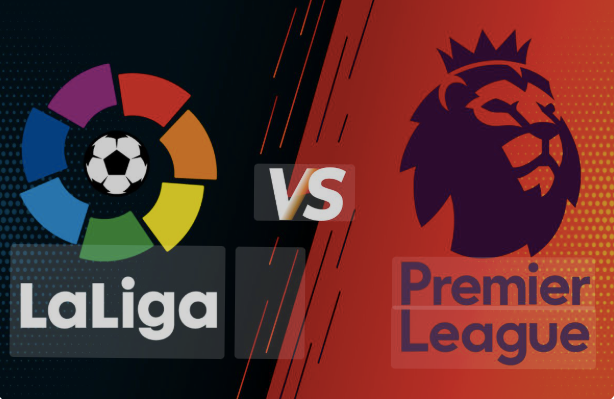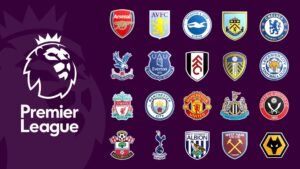Premier League Injury Crisis: Which Clubs Suffered Most & Why It Matters
Premier League Injury Crisis: Which Clubs Suffered Most & Why It Matters. Week after week, fans have watched as key players were sidelined, managers scrambled for replacements, and clubs were forced to dig deep into their squads just to stay competitive.
Injuries aren’t new to football, but this season has felt different. Almost every team has been hit. Some lost their stars for months, others played huge matches with second-choice players. So, what’s really going on? Why are injuries piling up? And which clubs have suffered the most?
In this article, we’ll break it down. We’ll look at the numbers, the clubs hit hardest, the types of injuries happening, and why this matters for the league, fans, and the players themselves.
The Rise in Injuries: What’s Going On?
If you’ve been following the Premier League closely, you’ll know this season has been tougher than usual. Players are picking up knocks left and right. But why?
Here are a few reasons:
1. Packed Fixture List
The football calendar is tighter than ever. With domestic competitions, European games, and international breaks, players barely have time to rest. Some clubs have played **three games a week** for months.
2. Shorter Recovery Time
When players don’t get enough rest between games, their risk of injury goes up. Muscles don’t heal. Fatigue sets in. And suddenly, a sprint turns into a hamstring tear.
3. High-Intensity Play
Premier League games are fast and physical. Teams press high, chase hard, and defend aggressively. It takes a toll on the body. Over a full season, that intensity builds up and leads to breakdowns.
4. Winter Weather
The middle part of the season cold, wet, and heavy pitches makes injuries more likely. Slippery surfaces and tired legs don’t mix well.
Who Got Hit the Hardest?
Let’s take a closer look at which clubs have suffered the most from injuries this season.
1. Manchester United – Injury Crisis Central
No club has faced more injury problems than Manchester United. From the very start of the season, their squad looked like a hospital ward.
Luke Shaw was out for months.
Lisandro Martínez missed several spells with recurring issues.
Casemiro, Eriksen, and Amad Diallo also had long layoffs.
Even new signings like Rasmus Højlund and Mason Mount struggled to stay fit.
This forced Erik ten Hag to constantly rotate his lineup and field players out of position. At times, their entire defense was makeshift. United’s form suffered because they simply couldn’t keep their best XI on the pitch.
2. Chelsea – A Season of Setbacks
Chelsea have had injury problems for a few years now, and this season continued the trend. The team has depth, but the number of key absences has been shocking.
Reece James, their captain, barely played.
Christopher Nkunku, a big summer signing, missed the first half of the season.
Ben Chilwell, Wesley Fofana, and Romeo Laviaalso spent more time in recovery than on the pitch.
Mauricio Pochettino tried to adapt, but consistency was hard to find. Young players were thrown in early, and the team often lacked chemistry.
3. Tottenham – Fast Start, Then Trouble
Spurs began the season flying under Ange Postecoglou. They played exciting football and topped the table early. But then the injuries started piling up.
James Maddison, their midfield engine, picked up an ankle injury.
Micky van de Ven, key to their high line, suffered a serious hamstring tear.
Cristian Romero was suspended and injured at different times.
Even Heung-min Son and Richarlison had short spells out.
With their spine missing, results dipped. Spurs lost momentum and dropped out of the title race.
4. Newcastle United – A Brutal Schedule
Newcastle had the extra load of playing in the Champions League, and it took a toll.
Sandro Tonali was banned for off-field issues, and injuries followed in midfield.
Callum Wilson, Harvey Barnes, and Joe Willock missed long stretches.
Sven Botman and Nick Pope also had serious injuries.
Eddie Howe often had to field bench players in massive fixtures. The depth of the squad was tested and at times, it wasn’t enough.
5. Liverpool – Managing the Load
Liverpool were better off than some clubs but still faced issues.
Andy Robertson dislocated his shoulder on international duty.
Thiago Alcântara barely played due to recurring fitness concerns.
Joel Matip suffered a major ACL injury.
Diogo Jota and Mohamed Salah missed critical periods.
To their credit, Klopp rotated well and got results, but Liverpool were never fully at full strength for more than a few weeks.
Which Positions Suffered Most?
Interestingly, not all positions were hit equally. Some areas of the pitch saw more injuries than others.
1. Full-Backs and Wing-Backs
These players cover the most ground in games. They sprint up and down constantly, which increases the risk of muscle injuries. Names like Reece James, Luke Shaw, and Kieran Tierney all missed significant time.
2. Center-Backs
Tough tackles, aerial duels, and physical battles make this a high-risk position. Lisandro Martínez, Micky van de Ven, and Wesley Fofana are just a few defenders who went down.
3. Creative Midfielders
Players like Maddison, Mount, and De Bruyne are often targeted by opponents and usually carry the creative load. They tend to take more hits and get overworked, especially in teams lacking depth.
Why This Injury Crisis Matters
You might think, “Injuries happen. It’s part of the game.” That’s true, but when injuries affect multiple teams for long periods, the entire league feels it. Here’s why it really matters.
1. Title Race and European Spots
When top teams lose key players, it impacts results. A team with 4–5 injuries can’t perform at their highest level. It means the title race might be affected by health rather than talent. The same goes for top-four battles or relegation fights.
2. Manager Pressure
Injuries put huge pressure on managers. They have to change tactics, rely on young or untested players, and justify poor results. At clubs like United and Chelsea, fans questioned the manager when the squad was simply broken down.
3. Young Players Thrown In Too Early
While it’s great to see youth players get chances, many were forced into starting roles before they were ready. Mistakes followed, confidence took a hit, and careers can stall before they take off.
4. Fan Experience
Fans pay big money to watch the best players. When stars are injured, the quality of the game drops. It’s not just about points it’s about enjoyment. Empty benches and patched-up lineups aren’t what fans dream of.
Is It Just Bad Luck?
Some injuries are unlucky. A bad tackle, a twisted ankle, a fall in training—these things happen. But when almost every club is hit, it’s no longer just bad luck. It’s a pattern. And the pattern points to a deeper problem.
The game is too fast, too full, and too demanding. Football Is Changing
Players run more than ever before.
Seasons are longer.
International games add more stress.
Pre-season is shorter.
Summer breaks are barely enough to recover.
The human body isn’t built for 60+ high-intensity matches a year with travel across continents.
Can It Be Fixed?
This is the big question. Can clubs or the league do anything to reduce injuries?
1. Better Squad Rotation
Managers must rotate more even if it risks short-term results. Saving a player from injury is better than pushing him to the limit.
2. Smarter Scheduling
The Premier League, FA, and UEFA need to work together to space out fixtures more logically. Not everything needs to be crammed into 10 months.
3. Use of Technology
Clubs now use GPS and health data to track fatigue. Teams that use this well can protect players better. But it’s not perfect, and sometimes managers still gamble.
4. Player Education
Teaching players to listen to their bodies is key. Many push through pain and end up doing long-term damage.
A Season to Remember – For the Wrong Reasons?
This Premier League season gave us incredible goals, tight races, and emotional moments. But it also gave us long injury lists, weakened lineups, and missed opportunities.
Fans will remember Haaland’s goals, Arsenal’s resurgence, and Klopp’s farewell—but they’ll also remember the “what-ifs.”
What if United had a fit defense all year?
What if Chelsea had Nkunku from the start?
What if Spurs didn’t lose Maddison during their hot streak?
What if Liverpool had Salah for that key run-in?
Conclusion
The Premier League injury crisis wasn’t just a side story this season. It was one of the main headlines. Every club felt it. Every manager dealt with it. Every fan noticed it.
Some teams coped better than others. Some suffered more. But everyone in football is now facing the same truth: the game is pushing players too hard.
If nothing changes, these injury problems won’t just continue they’ll get worse. Football is about passion, performance, and the best facing the best.
But that only happens when the best players are fit. For the sake of the sport, the clubs, and the players themselves, it’s time to rethink how the game is played.









Post Comment